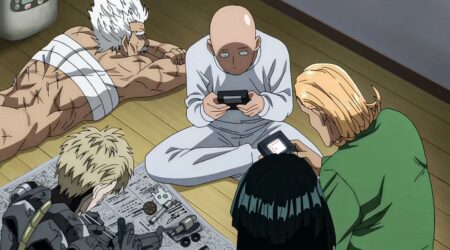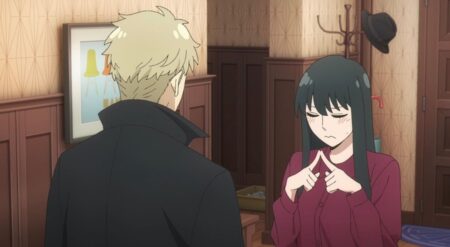
Demon Slayer: Kimetsu no Yaiba has become iconic in its short lifespan in Shonen Jump rising to one of the top-selling manga titles in existence. Now, with Demon Slayer -Kimetsu no Yaiba- The Movie: Mugen Train (Mugen Train) the story continues for fans of the anime adaptation of the series. Directed by Haruo Sotozaki, featuring the original story by Koyoharu Gotoge with screenplay and animation production by studio ufotable, Mugen Train beautifully adapts the Mugen Train arc of the manga, roughly chapters 54 through 69.
Now, it’s important to note that this anime movie does something others don’t: makes it canon. If you’re unfamiliar with anime films based on existing series, many exist as stand-alone, with the main story not being impacted by the events of the animated film or films. But in Mugen Train’s case, fans are left at the train station at the end of season one, picking up immediately after that episode in the film. Set after the events of season one, Mugen Train has Tanjiro, Nezuko, Zenitsu, and Inosuke embark on a new mission. Together, with one of the most powerful swordsmen of the Demon Slayer Corps, Flame Hashira Kyojuro Rengoku, they investigate the mysterious disappearance of over 40 people aboard the Mugen Train.
What makes this section of the Demon Slayer manga powerful is how it handles grief, guilt, trauma, and moving forward in the face of all of it. And in this way, the film succeeds. Mugen Train manages to bring beautiful and violent animation, a thrilling soundtrack, and emotional character moments that showcase the resiliency of humanity and more importantly, the strength it takes to maintain it. But before digging into the layers of storytelling and thematic elements, it’s important to talk about the film’s beauty.
Demon Slayer in its anime form has been stunning to watch, but with Mugen Train, studio ufotable takes it up to a whole other level. Blending 2D and 3D animation strategically, they have crafted one of the most gorgeous and immersive anime films I’ve had the pleasure of watching. The stark contrasts between the various styles used in the film all work to craft something unique. Like the anime before it, the more traditional anime style is adjusted to capture mangaka Gotoge’s unique character designs, utilizing thick black outlines to do so. Additionally, the animation of character fighting forms like Tanjiro’s become vivid Kanagawa-styled waves with 3D elements mixed in. The same can be said for Rengoku’s fire forms which are animated in anime style but layered with 3D and realistic firey elements as well. To round it all out, the demonic elements become 3D, oozing across the train and striking contrast not only in form but in color and atmosphere as well.
In fact, Mugen Train is one of two films in the past year where I have longed to return to a theater. The powerful action sequences are stunning in every way and take the time to show mastery over old techniques and breathtaking new ones. Not to mention, this film clearly earns and loves its R-rating.

But the animation, in all of its beauty, doesn’t have to carry this film. Instead, ufotable brings to life Gotoge’s story and doesn’t miss a beat. If you’re unfamiliar with the arc, while on the train, Tanjiro, Zenitsu, Inosuke, and Rengoku are pulled into a forced slumber, causing them to dream. That dream is as sweet as can be, and for Tanjiro, it means overwriting the trauma of his past and reuniting him with his family.
At just under two hours, Mugen Train allows enough time for action-packed sequences while also maintaining a steady emotional pace to showcase our heroes, namely Tanjiro, processing their grief and guilt. For Tanjiro, he has to make the decision, stay with his family—the one he couldn’t protect—or wake up. The choice to return to your trauma and grief is one that Tanjiro doesn’t make lightly, and for the writing team’s credit, it’s delivered well.
While we know that ultimately Tanjiro will wake up, it’s how he does it, and the path he takes to reach his determination, that delivers a heavy and necessary message for today’s world. In the back half of the film, we get to not only see Rengoku’s full power but also get to see his past and how it’s influenced his steadfast will. Additionally, the close moments of the film connect to the first words we hear. You can’t get stuck in your grief, because time doesn’t wait. Feel it, experience it, but you have to keep moving.
This powerful theme is pushed largely by Rengoku and Tanjiro, which centers them for the bulk of the film. Because of this, Nezuko, Zenitsu, and Inosuke get little screen time. That said, if you’re a fan of these characters, they do make the most of it. While we could have used more of them overall, Mugen Train’s tight story makes up for it, with every character pushed to highlight the central themes.
Overall, Mugen Train is masterful and sets a new standard for anime films to meet. Specifically, Demon Slayer -Kimetsu no Yaiba- The Movie: Mugen Train proves that an arc can be told concisely and eloquently to an audience in one movie. Doing this hopefully opens the door for other anime series to take note. While the non-canon films are great and can deliver their own strong character moments, as a fan, I want to see more films like Mugen Train. Not only because “meh filler,” but because it delivers impact on such a wide scale for the characters involved. It’s important to see it stick and not forgotten. And with that, I’m marking my calendar for Demon Slayer Season 2.
Demon Slayer -Kimetsu no Yaiba- The Movie: Mugen Train arrives in theaters April 23, 2021 and will be available On Demand June 22, 2021.
Demon Slayer -Kimetsu no Yaiba- The Movie: Mugen Train
-
Rating - 10/1010/10
TL;DR
Mugen Train is masterful and sets a new standard for anime films to meet. Specifically, Demon Slayer -Kimetsu no Yaiba- The Movie: Mugen Train proves that an arc can be told concisely and eloquently to an audience in one movie. By doing this, hopefully, opens the door for other anime series to take note.







